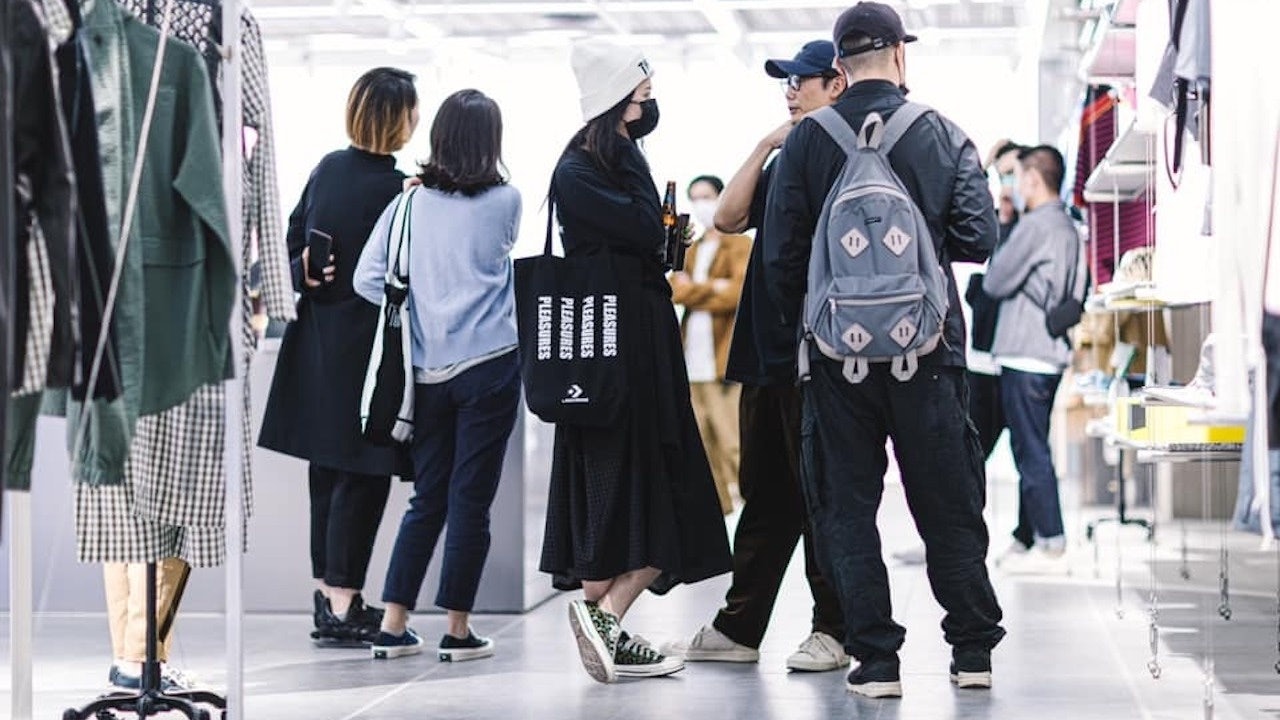Key Takeaways:#
- Despite opening on the cusp of the coronavirus pandemic in December 2019, TX Huaihai Youth Energy Center in Shanghai drew more than five million visitors last year.
- Unlike most competitors, TX Huaihai is not driven by rental revenue, but by aggregate sales, with shops offered rent-free space in exchange for a percentage of sales.
- Its curated retail model is based on bringing internet-famous brands and merchants into the real world, with sophisticated data analysis driving decisions and suggesting enhancements to boost performance.
Imagine a shopping mall designed around a single target audience, offering a curated collection of stores handpicked by their fans. And unlike every other mall, this one isn’t driven by rental revenue, but by aggregate sales, offering space in exchange for a percentage of store sales. And this venue doesn’t compete with online retail but serves as a physical location that amplifies it, interacting with the worlds of e-commerce and social commerce to provide a unique and innovative experience for a new generation of consumers.
Now, put that shopping mall in the middle of one of the world’s most expensive retail locations, and you have TX Huaihai Youth Energy Center in Shanghai. Despite opening on the cusp of the COVID-19 pandemic, TX Huaihai brought in more than five million visitors in 2020, its first full year of operation. It is another example of China’s new retail, relying heavily on data and technology to create unique offerings that target niche audiences — in TX Huaihai’s case, affluent, urban adults under the age of 35, who are largely leaving behind traditional brick-and-mortar shopping in record numbers in search of more compelling experiences, whether online or offline. According to a 2020 Statista e-commerce study, 92 percent of Chinese consumers shifted to some form of online consumption following the pandemic lockdowns, and 64 percent of the Chinese population now shops online.
A joint venture between state-owned department store operator Shanghai Bailian Group and URF (Urban Revitalization Force) Group, founded by Hong Kong-based real estate entrepreneur Dickson Szeto, TX Huaihai is housed in a six-story building that was formerly home to two big names in “old” retail, Japan’s Isetan department store and Germany’s Media Markt. The location is one of the most competitive retail districts in the world —flanked by luxury shopping mall iAPM on one end, and the affluent pedestrian zone Xintiandi on the other. It is also a good seven-minute walk from the closest metro station, generally considered an inconvenient distance for its target audience of young Shanghainese, and parking in the area is next to impossible to find.
A number of major youth-oriented brands — including Nike, adidas, and Puma already have standalone shops in the vicinity, so TX Huaihai needed to look elsewhere for potential retailers, finding an unlikely source in online Taobao stores to tap for its recruitment drive. E-commerce operators with solid social media followings and track records of strong sales were offered a chance to open pop-up shops for three months, rent-free, with the opportunity to stay on if they hit sales targets. Thanks to their existing fan bases, the Taobao shops could easily reach out directly to consumers and encourage them to visit at TX Huaihai. And because data is centralized through a common digital point-of-sale ecosystem, TX Huaihai’s management could help drive business to specific stores or have them partner with neighboring retailers.
Upon TX Huaihai’s opening in December 2019, 50 percent of its stores were designated as pop-ups, while the remaining space was set aside for longer-term occupants. As shoppers flocked to the new mall, established global brands such as Fendi, Nike, and G-Shock began to take notice and hosted their own pop-up retail events at TX Huaihai.
Badmarket, a youth-oriented fashion, accessories and lifestyle startup, was chosen to launch one of the first pop-up shops at TX Huaihai, and has now become a permanent fixture in the mall, offering an eclectic mix of innovative apparel and creative goods. Innersect, a multi-brand online retailer and organizer of China’s biggest streetwear fashion expo, chose TX Huaihai to launch its first flagship store, bringing a myriad of digitally native domestic brands to offline retail.
The layout at TX Huaihai is designed to encourage discovery, with a labyrinth of trendy stores recreating the festive atmosphere of a weekend market. One doesn’t go to TX Huaihai simply to make a purchase, but to enjoy cultural experiences with friends. The social recruitment of niche influencer groups to TX Huaihai has been a fundamental strategy aimed at boosting traffic to stores. Youth-focused community event organizers can take advantage of the ample open space in the front of the mall to host events at little or no charge if their organization meets TX Huaihai’s strict criteria. Despite the pandemic, there were more than 100 events at TX Huaihai in 2020, and some 180 events have been planned for this year.
TX Huaihai also boasts highly sophisticated data collection tools, using cameras and AI visual recognition to detect basic demographic information on consumers and analyze store traffic patterns. “TX Huaihai is operated like a giant website,” said Jiang Dan, COO of Shanghai QXTEC, a supplier for the mall’s digital ecosystem. “We are constantly running A/B testing models to look at ways we can improve performance.”
This centralized model of driving growth — by delivering innovative experiences that customers cannot get online — challenges the traditional shopping mall model that relies primarily on collecting rent from tenants, and provides a compelling example of how shopping mall retailers can regain customers thought to be lost to online channels.
Bryce Whitwam is an Adjunct Professor of Marketing at the NYU School of Professional Studies in Shanghai
